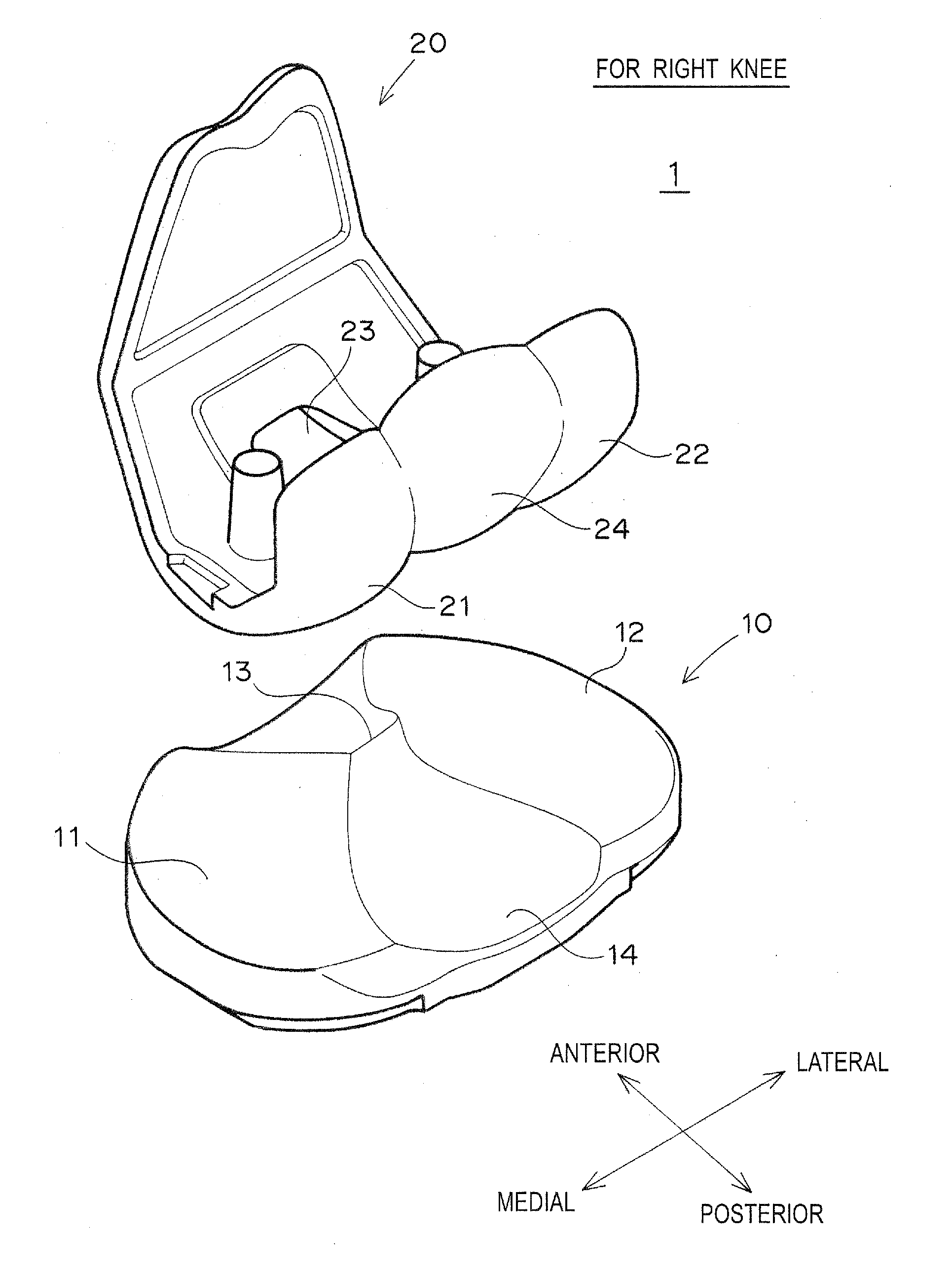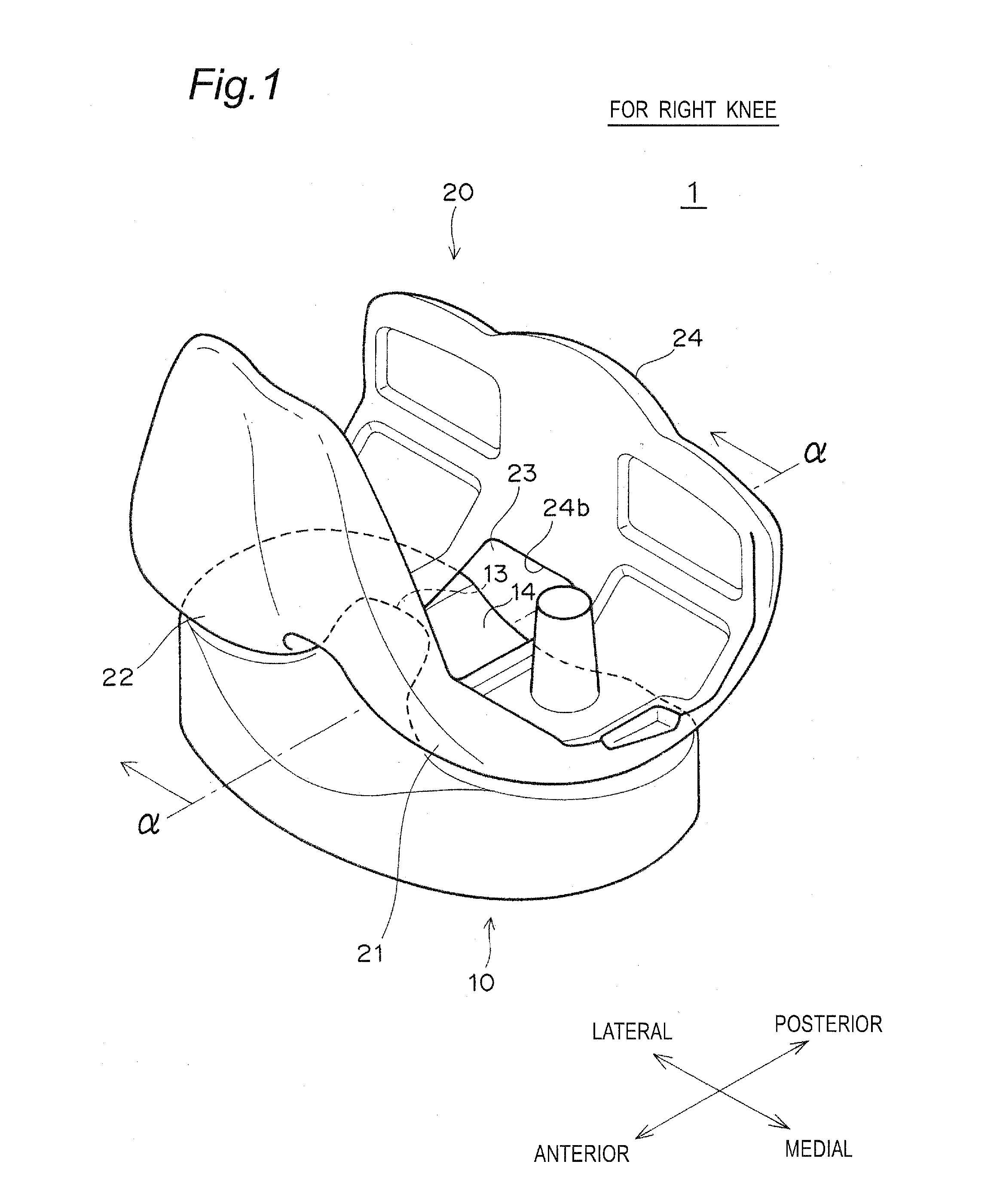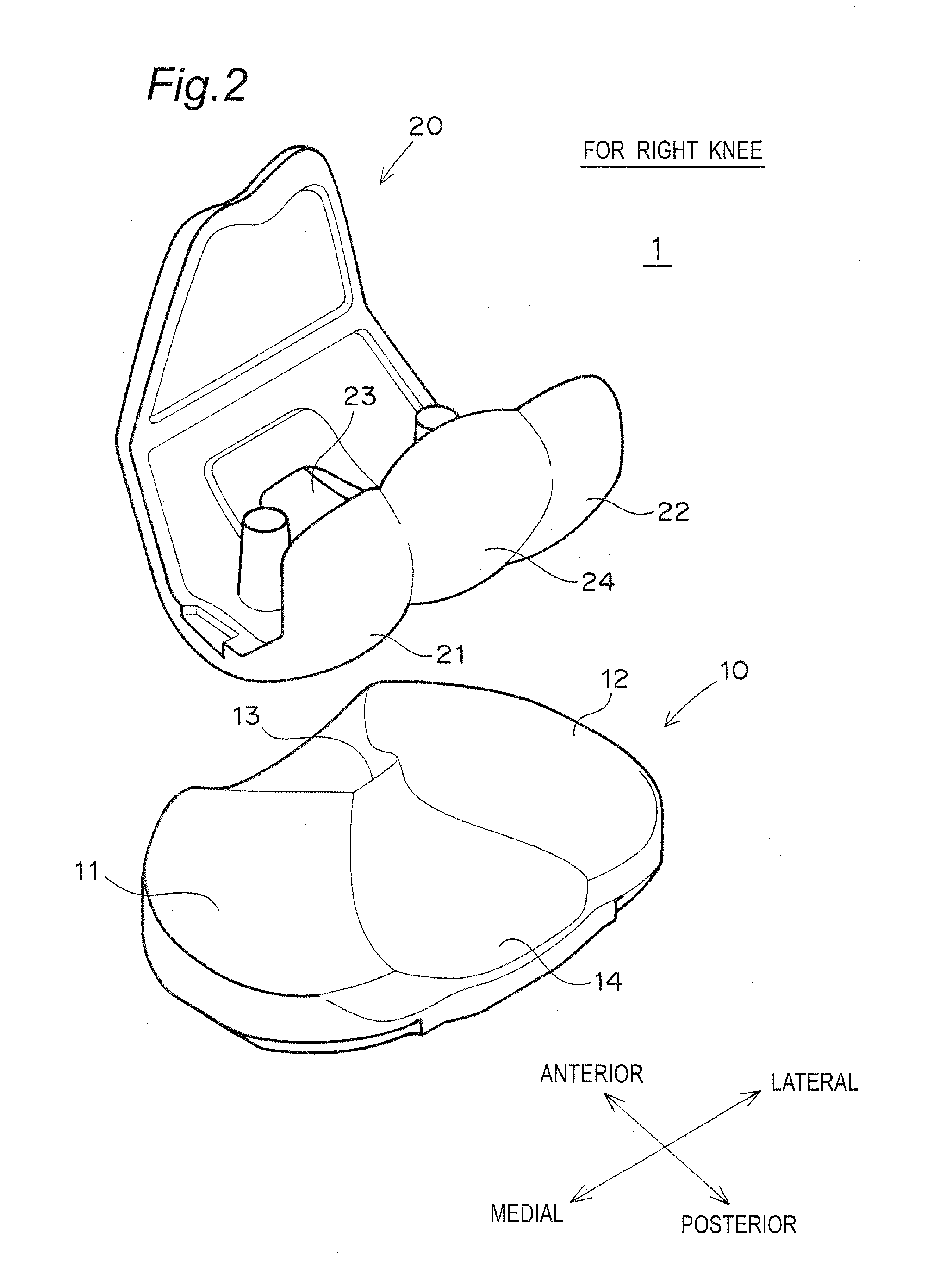Artificial knee joint
a knee joint and artificial technology, applied in knee joints, prostheses, medical science, etc., can solve the problems of inability to expect the knee to rotate largely, the post is drastically worn locally, and the knee joint may become unstable so as to improve the stability in the rotation direction, the flexibility of the elliptical spherical sliding portion is enhanced, and the width of the elliptical spherical sliding portion is increased
- Summary
- Abstract
- Description
- Claims
- Application Information
AI Technical Summary
Benefits of technology
Problems solved by technology
Method used
Image
Examples
first embodiment
[0071]FIGS. 1 and 2 show an artificial knee joint 1 in the present embodiment.
[0072]The artificial knee joint 1 includes a femoral component 20 fixed to a distal end of a femur, and a tibial plate 10 fixed to a proximal end of a tibia.
[0073]The femoral component 20 includes a medial condyle 21 and a lateral condyle 22. Between the medial condyle 21 and the lateral condyle 22 are formed an opening 23 and an elliptical spherical sliding portion 24 for connecting posterior ends of the medial condyle 21 and the lateral condyle 22.
[0074]The tibial plate 10 is fixed to the proximal end of the tibia via a metal tibial tray (not shown). The tibial plate 10 includes a medial fossa 11 and a lateral fossa 12. A spine 13 and a concave sliding surface 14 forming the posterior surface of the spine 13 are formed between the medial fossa 11 and the lateral fossa 12.
[0075]When the femoral component 20 and the tibial plate 10 form the artificial knee joint 1, the medial condyle 21 of the femoral comp...
second embodiment
[0118]The artificial knee joint 1 of the present embodiment can externally rotate more easily in flexion. This embodiment differs from the first embodiment in the shape of an edge on the posterior end side of the tibial plate 10. The structures of other components in the present embodiment are the same as those of the first embodiment.
[0119]In the present embodiment, in order to promote the external rotation of the knee joint in deep flexion, the tibial plate 10 preferably includes a posterior end sliding surface at the edge of the posterior end side of the lateral fossa 12.
[0120]In the present embodiment, as shown in FIG. 15, the posterior end of the lateral fossa 12 of the tibial plate 10 is preferably chamfered by a plane or a curved surface. The chamfered surface forms a posterior end sliding surface (posterior end sliding curved surface 12c, or posterior end sliding plane 12p).
[0121]The term “posterior end sliding curved surface 12c” as used in the present specification means a...
PUM
 Login to View More
Login to View More Abstract
Description
Claims
Application Information
 Login to View More
Login to View More - R&D
- Intellectual Property
- Life Sciences
- Materials
- Tech Scout
- Unparalleled Data Quality
- Higher Quality Content
- 60% Fewer Hallucinations
Browse by: Latest US Patents, China's latest patents, Technical Efficacy Thesaurus, Application Domain, Technology Topic, Popular Technical Reports.
© 2025 PatSnap. All rights reserved.Legal|Privacy policy|Modern Slavery Act Transparency Statement|Sitemap|About US| Contact US: help@patsnap.com



